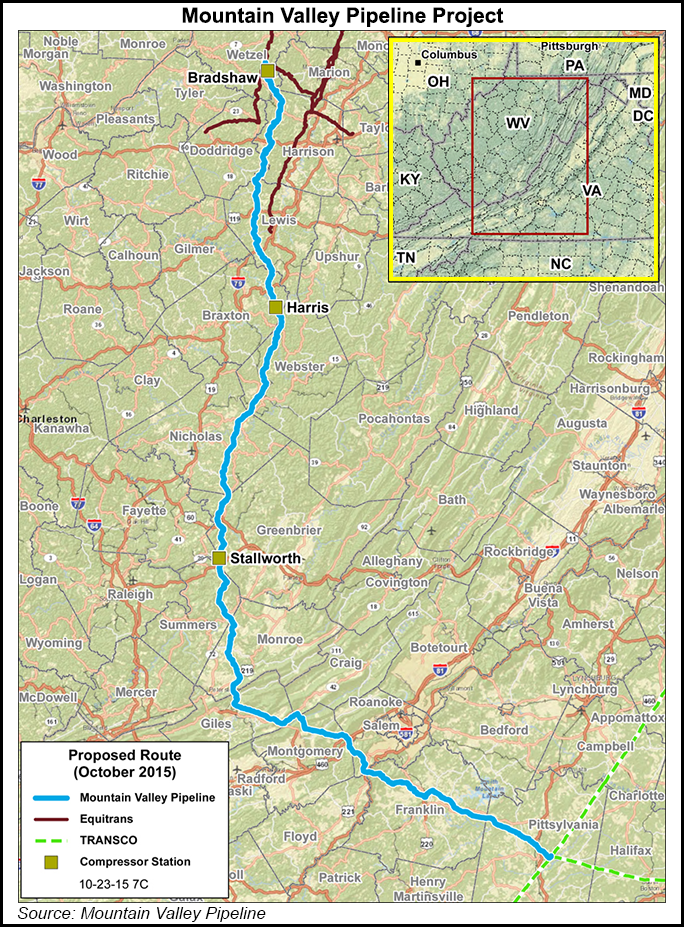Infrastructure | NGI All News Access | Regulatory
Federal Court Stays MVP Authorizations, All Construction Poised to Stop
The U.S. Court of Appeals for the Fourth Circuit has stayed key federal authorizations for the Mountain Valley Pipeline (MVP), which is again likely to halt nearly all construction along the project’s 300-mile route.

Environmental groups had asked for a stay of the U.S. Fish and Wildlife Service’s (USFWS) Endangered Species Act approvals for the project while the court reviews a broader challenge to them. The Biological Opinion (BO) and Incidental Take Statement (ITS) are needed for the 2 Bcf/d project’s federal certification, and without them, it can’t proceed.
But the court also granted USFWS’s cross-motion to suspend the environmental group’s case until the agency can revise and reissue the BO and ITS, which the agency expects to do by January. The groups would again be able to seek judicial review of the revised approvals, but that would require an entirely different case to be initiated, ClearView Energy Partners LLC said in a note to clients.
The environmental groups, including Wild Virginia and the Sierra Club, filed a petition for review of the BO and ITS in August. Shortly after the filing, MVP voluntarily suspended construction activities where work could imperil federally listed species or risk modifying their habitats.
The groups argued that the USFWS failed to protect the endangered Roanoke logperch. The groups also claimed that the agency didn’t set limits for the number of threatened or endangered bats that could be harmed or killed by the pipeline’s construction, an argument that caused problems for the similarly routed Atlantic Coast Pipeline (ACP).
The Fourth Circuit vacated ACP’s BO and ITS on two separate occasions, finding that USFWS failed to set clear limits for the project, which led to work stoppages.
MVP, which would move more Appalachian shale gas to Southeast markets, has been targeting a mid-2020 in-service date. It is more than 85% complete, but the project has faced repeated regulatory and legal delays.
Virginia fined the pipeline $2.15 million last week and required it to conduct additional monitoring and implement more environmental protections after hundreds of water protection violations.
© 2024 Natural Gas Intelligence. All rights reserved.
ISSN © 1532-1231 | ISSN © 2577-9877 |
